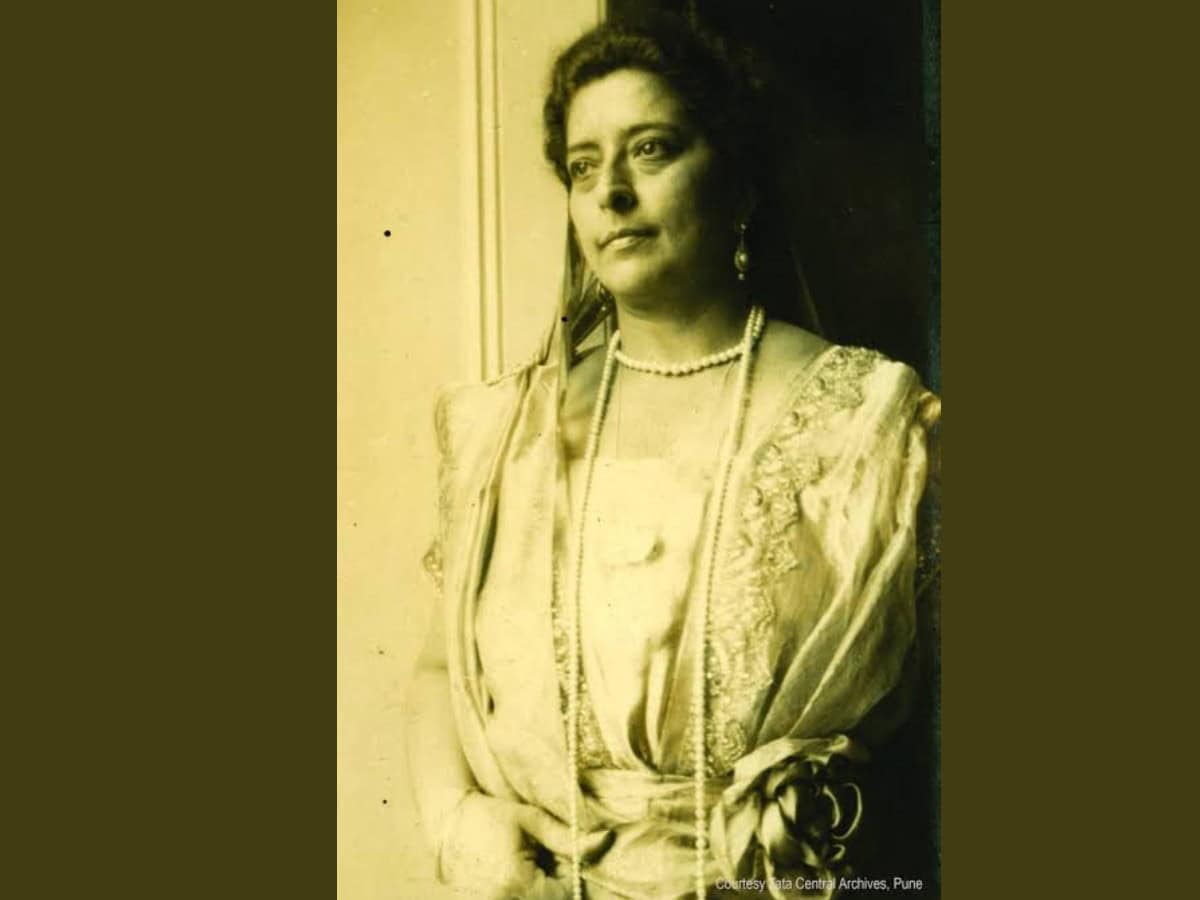
One hundred years ago when tennis was played in pristine white skirts and tee shirts by women participants, there was an Indian woman who played the game wearing a spotless white saree. Her name was Meherbai Tata and she was a person of many accomplishments.
Despite wearing a saree draped around her in the Parsi style, she displayed superb agility on the court. She won no less than 60 prizes in various tournaments in India. She was selected to take part in the 1924 Olympic Games in Paris in the mixed doubles competitions with Mohammed Saleem as her partner. But for unknown reasons the pair gave a walk over to their rivals as shown in the Olympedia website.
Meherbai was born in Bombay on October 10, 1879. Her father, Hormusji J. Bhabha, was one of the first Parsis to go to England to pursue higher education. When her family moved to Bangalore, she was educated at the Bishop Cotton School in Bangalore. There she was popularly known by her nickname of Mehri.
In 1884, her father was appointed as the principal of Maharaja’s College, Mysore. Under his guidance, Mehri excelled in English and Latin, and attended science classes. She successfully passed her matriculation at the age of 16, thereafter pursuing her studies in her father’s extensive library.
Married into the Tata family
On February 14, 1898, Meherbai married Dorabji Tata, the eldest son of Jamsetji N. Tata, founder of the Tata group of industries. Dorabji was known for having gifted his newly-wed bride the famous 245.35 carat Jubilee diamond in 1900, which she proudly wore when attending important public functions.
However, she later sold the diamond to raise funds for the Tata Iron and Steel Company (TISCO) which was facing financial difficulties. Her selfless gesture was highly appreciated by her family members and earned her the gratitude and affection of employees of the Tata group of companies.
Dorabji’s accomplishments
Her husband Dorabji was a man with great accomplishments too. He was a big sports lover and was a pioneer in the formation of the Indian Olympic movement. He played an instrumental role in funding and sending the Indian contingent for its first ever participation in the Olympic Games in 1920.
When he was a student of Cambridge University, Dorabji excelled at cricket and he continued to play the game for many years. He became the captain of the Parsee Gymkhana cricket team and was a patron of the Indian gymkhana cricket club in England. His wife Meherbai Tata became the first female member of the club in 1923. This happened a full 75 years before women were accepted as members by the revered Marylebone Cricket Club (MCC), owners of Lords, the home of cricket.
Dorabji knighted by British monarch
In 1910 Dorabji Tata was knighted by the British monarch King Edward VII for his contribution towards the industrial development of India. Thereafter, Dorabji became Sir Dorabji Tata and Mehri came to be called Lady Meherbai Tata.
Frequent travels with Dorabji across the world opened up new avenues for self-education which Mehri greatly enjoyed. Games, especially tennis, held a deep fascination for her. She played in several tournaments and won over 60 prizes and quite often the husband and wife pair of Meherbai and Dorabji partnered each other in mixed doubles competitions.
Garnered admiration and love
Meherbai’s pride in wearing the national dress, the saree, garnered admiration and love from many patriotic spectators. When not playing, the duo could sometimes be seen among the audience at the Wimbledon championships watching the contests avidly. On such occasions also, she was always dressed in spotless white sarees and she became very popular as a result of her immaculate dress.
In 1929, the Child Marriage Restraint Act, commonly referred to as the Sarda Act, was enacted. Much of the credit goes to the pioneers of the women’s movement in India, including Lady Meherbai Tata. She actively campaigned for it in India and abroad.
In middle age she was diagnosed with leukaemia and was admitted to a nursing home in Ruthin, North Wales, where she passed away on June 18, 1931. A year later, Sir Dorabji Tata established the Lady Tata Memorial Trust in memory of his wife Meherbai.
The Trust funds scientific research in blood-related diseases, with a special focus on leukaemia. The saree wearing Indian tennis player’s l will to find happiness that her deeds and those of her husband’s, are still bringing a smile of relief to the faces of thousands of her countrymen.

